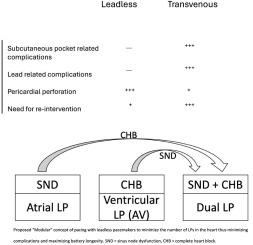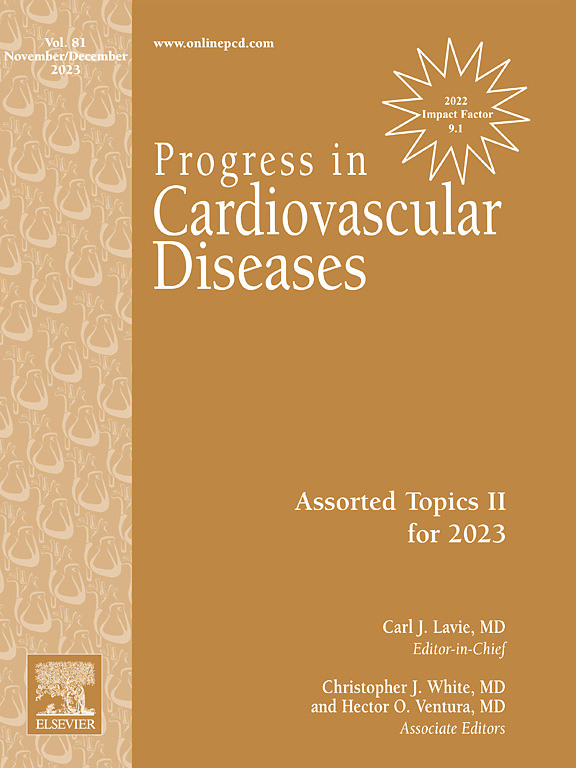无引线节奏:技术、技巧和新兴选择。
IF 7.6
2区 医学
Q1 CARDIAC & CARDIOVASCULAR SYSTEMS
引用次数: 0
摘要
与经静脉起搏器相比,无导线起搏器有几个优点。它们主要减少铅和袋相关并发症,从而减少再干预和感染率(图形摘要)。然而,无导线起搏器并非没有缺点。与经静脉心脏起搏器相比,植入无铅心脏起搏器存在较高的心包穿孔风险。此外,无引线起搏技术相对较新,人们对在升级或电池寿命结束时管理这些设备的最佳方法知之甚少。无引线起搏的模块化方法正在成为一种合理的方法,可以最大限度地减少心脏中的硬件数量,同时保留将单室设备升级为双室设备的能力。这篇综述旨在介绍不同的无导线起搏器,植入适应症,提取指南,同时强调该领域的进展。本文章由计算机程序翻译,如有差异,请以英文原文为准。

Leadless pacing: Technology, techniques, and emerging options
Leadless pacemakers offer several advantages over transvenous pacemakers. They mainly reduce lead and pocket related complications which result in a reduction of re-intervention and infection rates (Graphical abstract). However, leadless pacemakers are not without drawbacks. Implantation of leadless pacemakers present a higher risk of pericardial perforation compared to its transvenous counterpart. Also, the leadless pacing technology is relatively new, and little is known about the best approach to manage these devices at the time of an upgrade or when the battery is at end of life. A modular approach for leadless pacing is emerging as a logical way to minimize the amount of hardware in the heart while preserving the ability to upgrade a single chamber device to a dual chamber (Graphical abstract). This review aims to present an overview of the different leadless pacemakers, indications for implantation, guidance on extraction while highlighting the advances made in the field.
求助全文
通过发布文献求助,成功后即可免费获取论文全文。
去求助
来源期刊

Progress in cardiovascular diseases
医学-心血管系统
CiteScore
10.90
自引率
6.60%
发文量
98
审稿时长
7 days
期刊介绍:
Progress in Cardiovascular Diseases provides comprehensive coverage of a single topic related to heart and circulatory disorders in each issue. Some issues include special articles, definitive reviews that capture the state of the art in the management of particular clinical problems in cardiology.
 求助内容:
求助内容: 应助结果提醒方式:
应助结果提醒方式:


